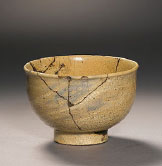Everybody hurts – REM drummer Bill Berry.
Everything hurts – Italian filmmaker Michaelangelo Antonioni.
Everywhere it hurts, put an end to painful cracking – Internet ad for IncrediCreme.
 Back in 2007, in the short span of 43 days: my father died, my wife had brain surgery, and my mother died. It occurred to me I should just stop answering the phone because it seemed each call just brought more painful news.
Back in 2007, in the short span of 43 days: my father died, my wife had brain surgery, and my mother died. It occurred to me I should just stop answering the phone because it seemed each call just brought more painful news.
I met a woman last week whose husband once faced the dilemma of being with his father who was having surgery for a brain aneurysm or with her as she was giving birth to their second child.
You could insert your own story here – or ones of people you know. And every saga would support Thomas Hobbes’ assertion in his work Leviathan that the life of man is “solitary, poore, nasty, brutish, and short.”
But Minnesota singer-songwriter Peter Mayer puts a different spin on life’s calamities. His new CD, Heaven Below, includes a song called Japanese Bowl, in which he compares the results of ordeals he has endured to kintsugi, the Japanese craft of mending ceramics with gold lacquer resin. Here’s my version of Mayer’s song:
 Rather than attempting to repair a cracked bowl in a way that hides the flaw, a Japanese kintsugi craftsman would use the shiny compound to repair the cracks while leaving behind a decorative history of the bowl’s damage. Here are examples: http://www.kintsugi.jp/gallery.html.
Rather than attempting to repair a cracked bowl in a way that hides the flaw, a Japanese kintsugi craftsman would use the shiny compound to repair the cracks while leaving behind a decorative history of the bowl’s damage. Here are examples: http://www.kintsugi.jp/gallery.html.
Mayer contends that, as with people, no two bowls fracture exactly the same way, so the repairs accentuated by the gold lines set each piece apart as unique – and more valuable as a result.
More valuable because of the cracks? Not a concept likely to catch on in our disposable culture.
But a 2009 exhibit at the Smithsonian Museum, “Golden Seams: The Japanese Art of Mending Ceramics,” revealed just how beautifully pottery shards could be reconstructed. It is said this repair technique was so highly esteemed in 15th century Japan that some actually broke their best ceramics on purpose just so they could be mended in gold.
Cracks? Yeah, I’ve got a few. So do you. Sometimes our painful experiences leave visible reminders, but more often than not we work hard to keep them beneath the surface. I suppose it’s an attempt to maintain the illusion we’re passing through this great ordeal unscathed.
And that’s often fairly easy to pull off, as C.S. Lewis wrote in The Problem of Pain, “Everyone feels benevolent if nothing happens to be annoying him at the moment.” When injured, we’re taught early to “walk it off,” a playground version of Nietzsche’s adage, “that which does not kill us makes us stronger.”
My wife broke her foot several years ago in a misstep off a street curb in New Orleans. The day is memorable for many reasons – but especially for the otherworldly Cirque du Soleil performers milling about the lobby of our hotel where my wife waited for me to transport her to the trauma center of the Tulane University Hospital – where we spent hours.
On a recent visit to a podiatrist, she saw the tell-tale remnants of that old injury on an x-ray of her foot – the area of the break had a “fracture callus” a little larger than the surrounding bone.
Internet discussions drone on about whether broken bones actually knit back stronger at the point of the break. The bottom line from orthopedic studies is that the fracture site is no more or less likely to break again.
This leads me to question Hemingway’s message in A Farewell to Arms that, “The world breaks everyone and afterward many are strong at the broken places.” Our strength isn’t at our broken places – our strength comes from the realization that it is the same thread of gold that knits together my brokenness and yours.
Or to put it another way – taking liberties with the meaning of Namaste – that which is broken in me recognizes that which is broken in you as well – and in that we can find strength.
